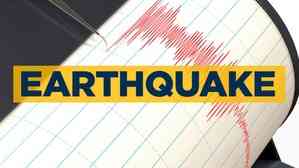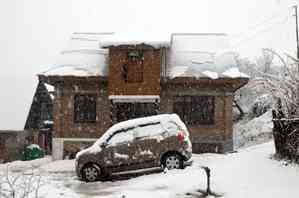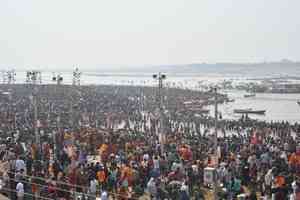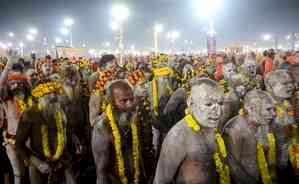6.1 magnitude earthquake strikes Nepal; tremors felt in Siliguri, Patna and other places in India
A 6.1 magnitude earthquake struck Nepal in the early hours of Friday, with tremors felt in Bihar, Siliguri, and other neighbouring areas in India, shaking homes and waking residents.

Kathmandu, Feb 28 (IANS) A 6.1 magnitude earthquake struck Nepal in the early hours of Friday, with tremors felt in Bihar, Siliguri, and other neighbouring areas in India, shaking homes and waking residents.
The National Earthquake Monitoring and Research Centre confirmed that the epicentre was in Bhairavkunda, Sindhupalchowk district, about 65 km east of Kathmandu.
The quake hit at 2:51 a.m. local time, causing panic in the central and eastern regions of Nepal.
The impact of Friday's earthquake was still being assessed, with no reports of damage or casualties. Social media posts showed buildings and ceiling fans shaking in Patna, Sikkim, and Darjeeling.
Residents in bordering regions of India and Tibet also reported feeling the jolt.
While no immediate casualties or major structural damage have been reported, local authorities continue to assess the situation.
Meanwhile another earthquake was recorded with a magnitude of 4.5 on the Richter Scale and the epicentr was Pakistan.
The second earthquake that hit Pakistan was took place at around 5:14 a.m. on Friday.
The tremors were not confined to Nepal.
Nepal sits in one of the most active seismic zones in the world—classified as Seismic Zones IV and V—making earthquakes a constant threat.
Nepal lies on one of the world's most seismically active zones, where the Indian tectonic plate pushes into the Eurasian plate at a rate of about 5 cm annually.
This tectonic movement not only lifts the Himalayan mountains but also generates immense stress beneath the Earth's surface. When this stress surpasses the strength of the rocks, it is released as an earthquake, which explains the frequent seismic activity in Nepal and the surrounding Himalayan region.
Nepal's geology, made up of young and unstable rock formations, amplifies the impact of earthquakes. The high population density in urban centres like Kathmandu, combined with unregulated construction practices, significantly increases the risk of casualties and damage.
The 2015 earthquake, which registered a magnitude of 7.8, killed more than 9,000 people and left more than a million buildings damaged or destroyed.
Given this history, even moderate quakes raise concerns about potential aftershocks and long-term damage.
Authorities have advised residents to stay alert for possible aftershocks, as secondary tremors are common after major seismic events.
Nepal's disaster response teams are closely monitoring the situation, and further updates are expected as assessments continue.
The German Research Center for Geosciences recorded the earthquake at a slightly lower magnitude of 5.6 and a depth of 10 km (6.21 miles), highlighting potential variations in seismic readings.
Regardless of the exact magnitude, the event serves as a stark reminder of Nepal's vulnerability to earthquakes and the importance of preparedness.
--IANS
khz/



 IANS
IANS 








